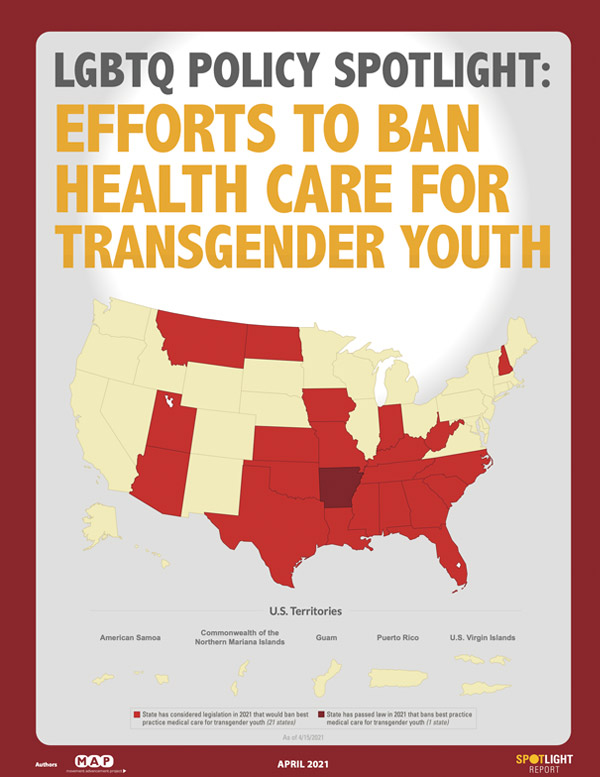LGBTQ Policy Spotlight: Efforts to Ban Health Care for Transgender Youth (PDF)Download Press Release: New Report Examines Bans on Medical Care for Transgender YouthVisit Equality Maps: Healthcare Laws and PoliciesVisit Blog Post — Get the facts: Best practice medical care for trans youth (May 3, 2022)Visit
In 2021 alone, legislatures in 22 states have introduced bills to ban best practice medical care for transgender young people. MAP's report,
Efforts to Ban Health Care for Transgender Youth, provides an overview of the legislative environment across the country, the harmful impacts these bills could have, as well a summary of best practice medical care for transgender youth. An estimated 64,700 transgender youth (ages 13-17) live in the states considering this type of legislation in 2021 and thus are at risk of losing access to critical medical care.
Of the 22 states that introduced legislation this year to ban healthcare for transgender youth, several introduced multiple bills with a range of harmful impacts. Prior to 2020, not a single state had introduced legislation to ban this medical care. Additionally, bills in 13 states would create criminal penalties for providing healthcare to transgender youth, even though this care adheres to guidance from leading medical organizations. Denying best practice medical care and support to transgender youth can be life-threatening, which can contribute to depression, social isolation, risk of self-harm and suicidal behavior, among other negative impacts.
- Gender affirming health care can be lifesaving and is supported by every major medical association in the United States, including the American Academy of Pediatrics, the American Medical Association, American Psychological Association, Endocrine Society, American College of Obstetricians and Gynecologists, and World Professional Association for Transgender Health (WPATH).
- Transgender young people have the best chance to thrive when they’re supported and have access to the health care they need, like any other child. Ultimately, medical decisions are best left to patients, their families, and their health care providers, in accordance with medical best practices.
Recommended citation: Movement Advancement Project. April 2021.
LGBTQ Policy Spotlight: Efforts to Ban Health Care for Transgender Youth.
www.lgbtmap.org/2021-spotlight-health-care-bans. Accessed [date of access].


